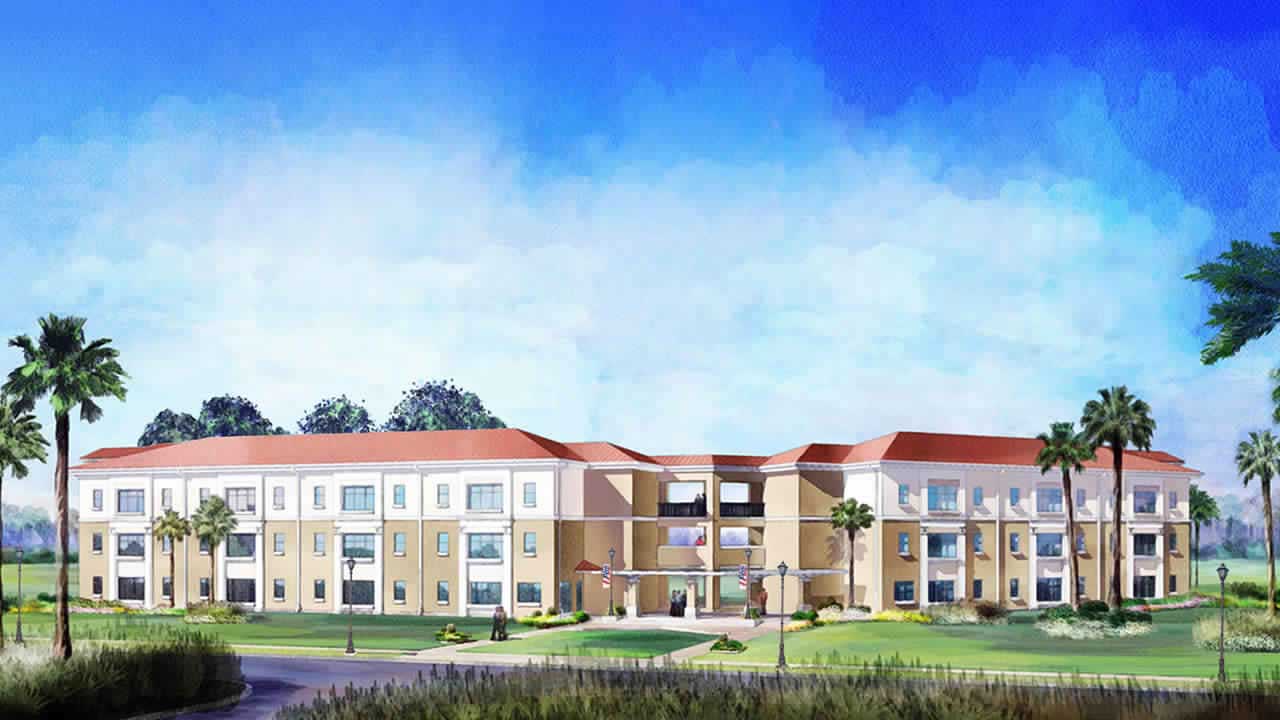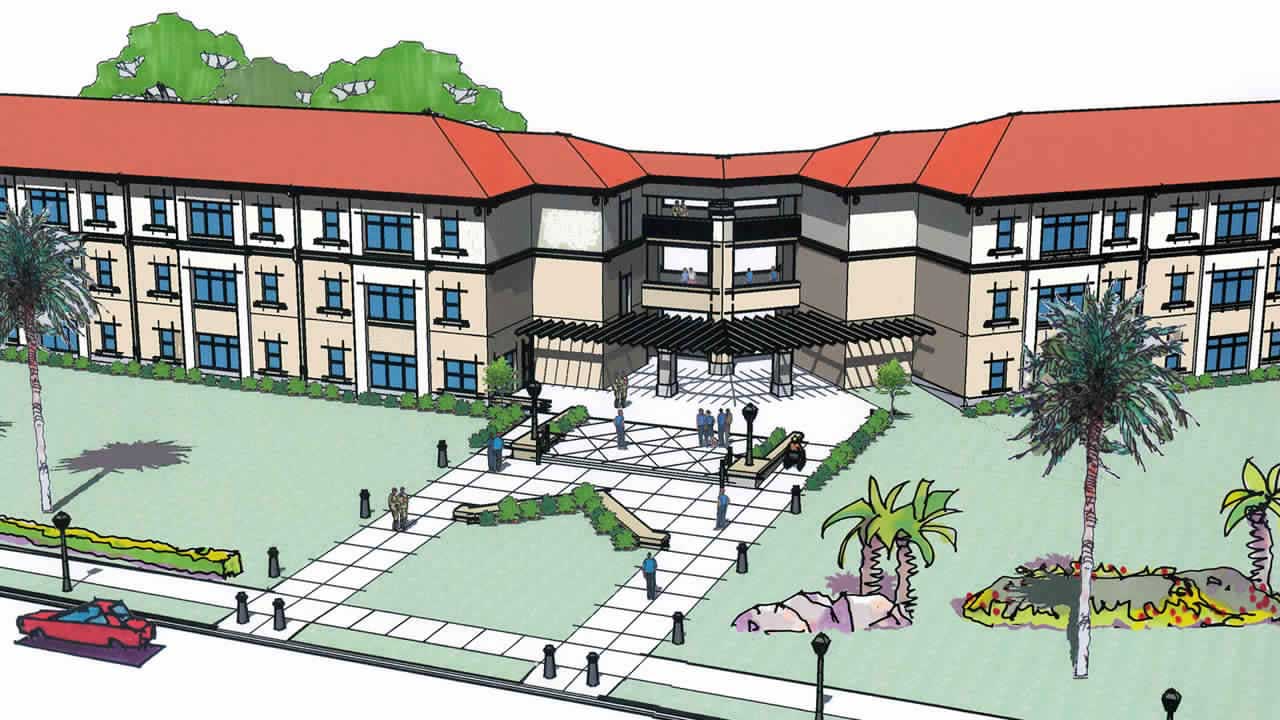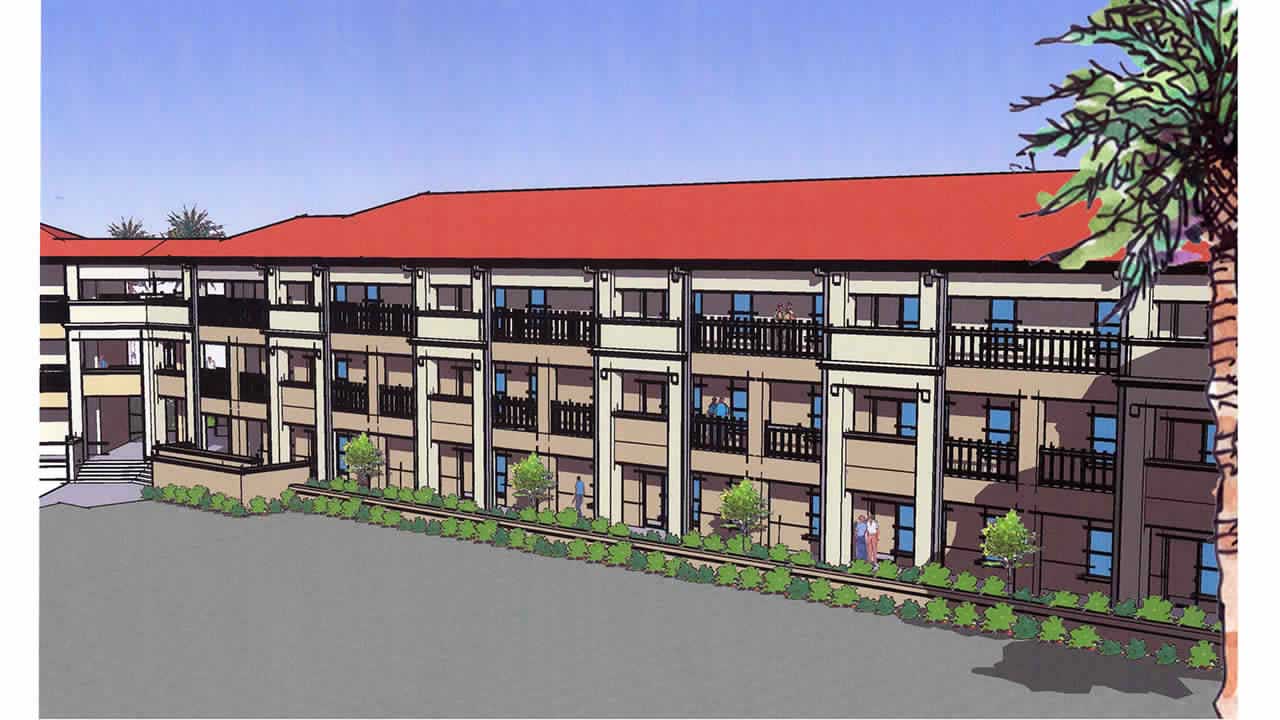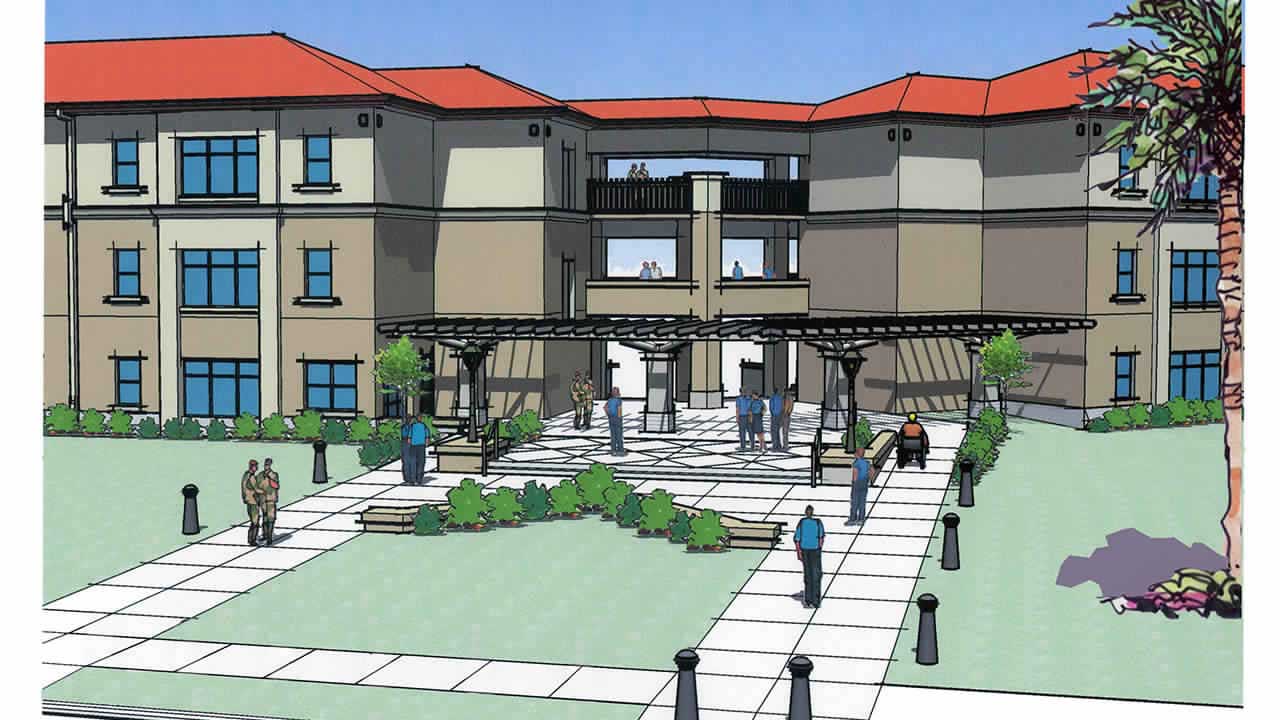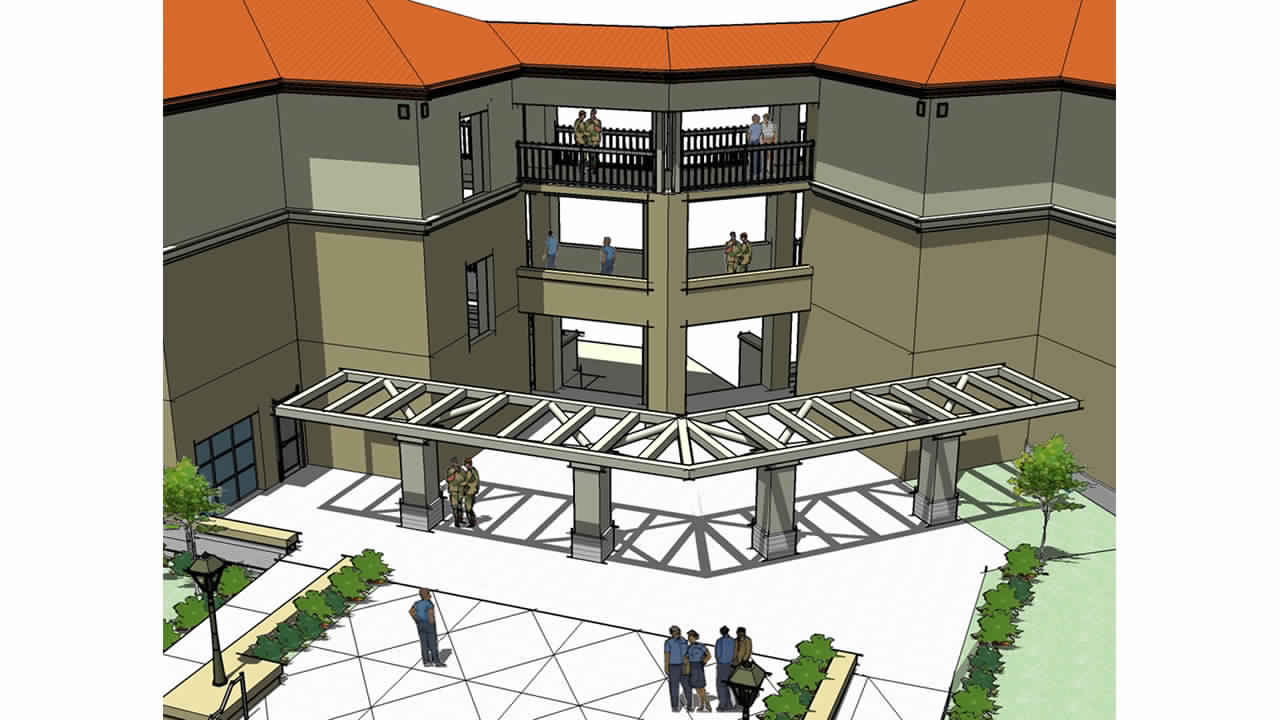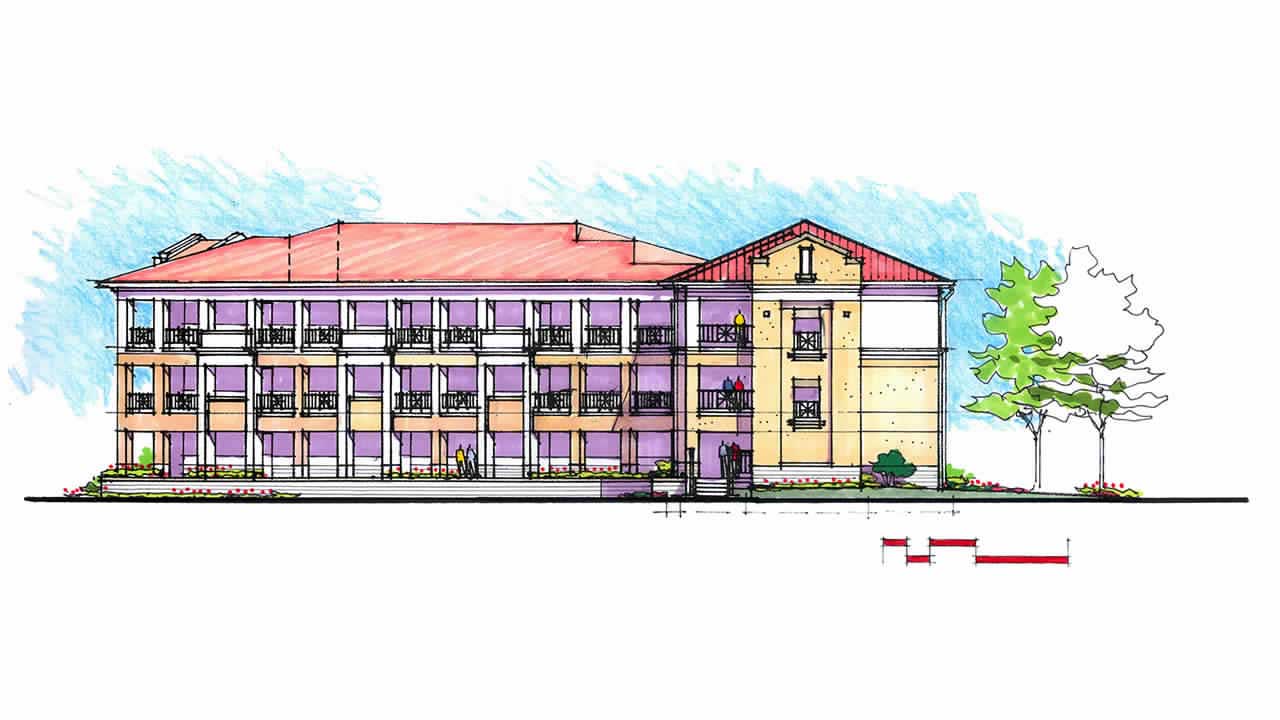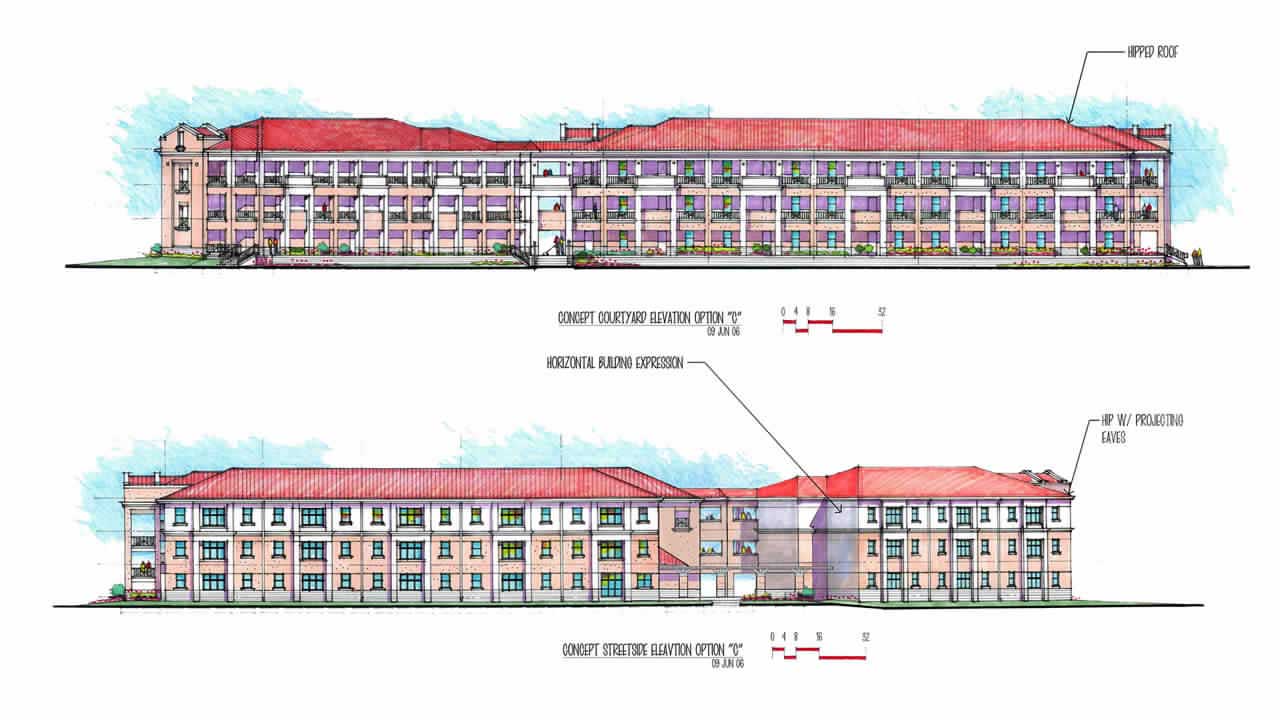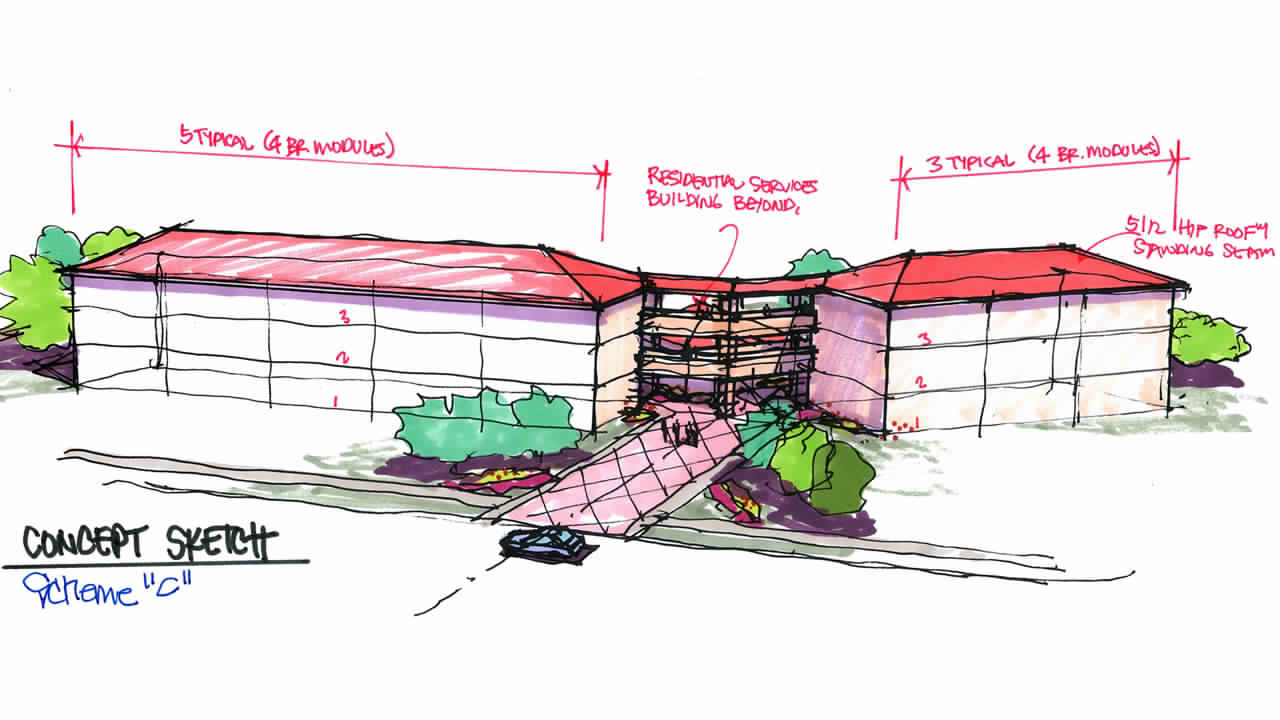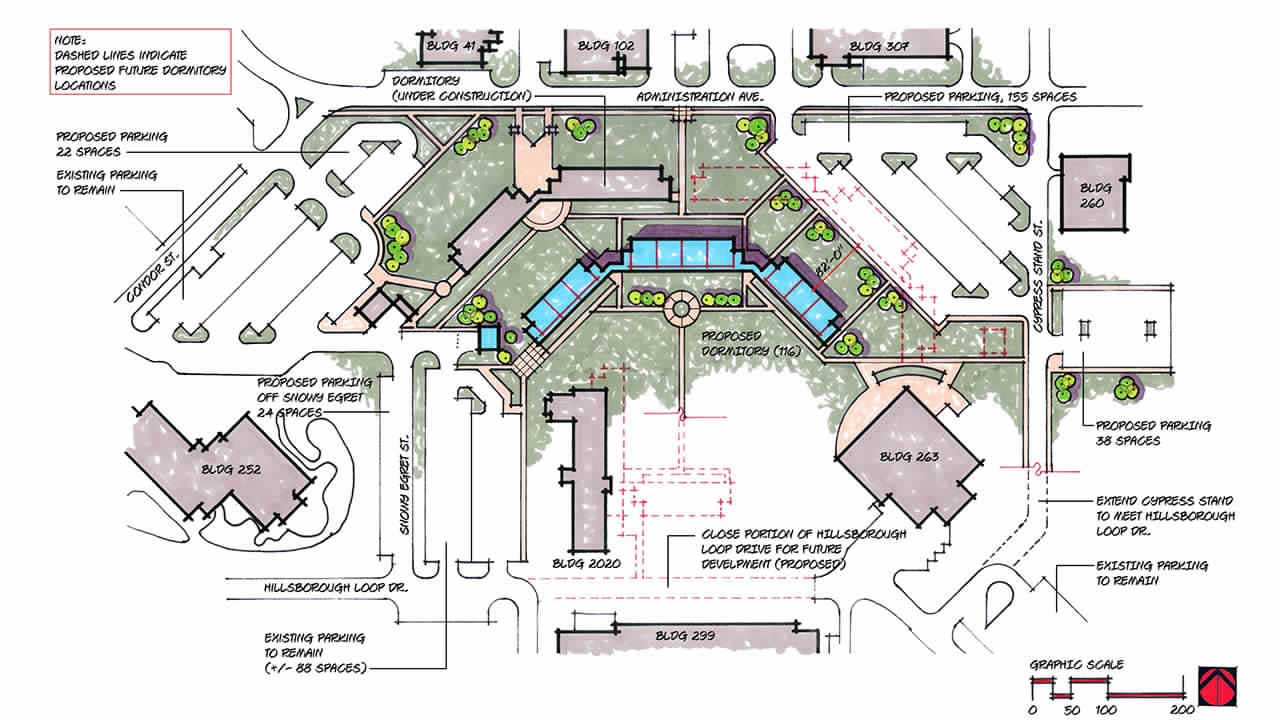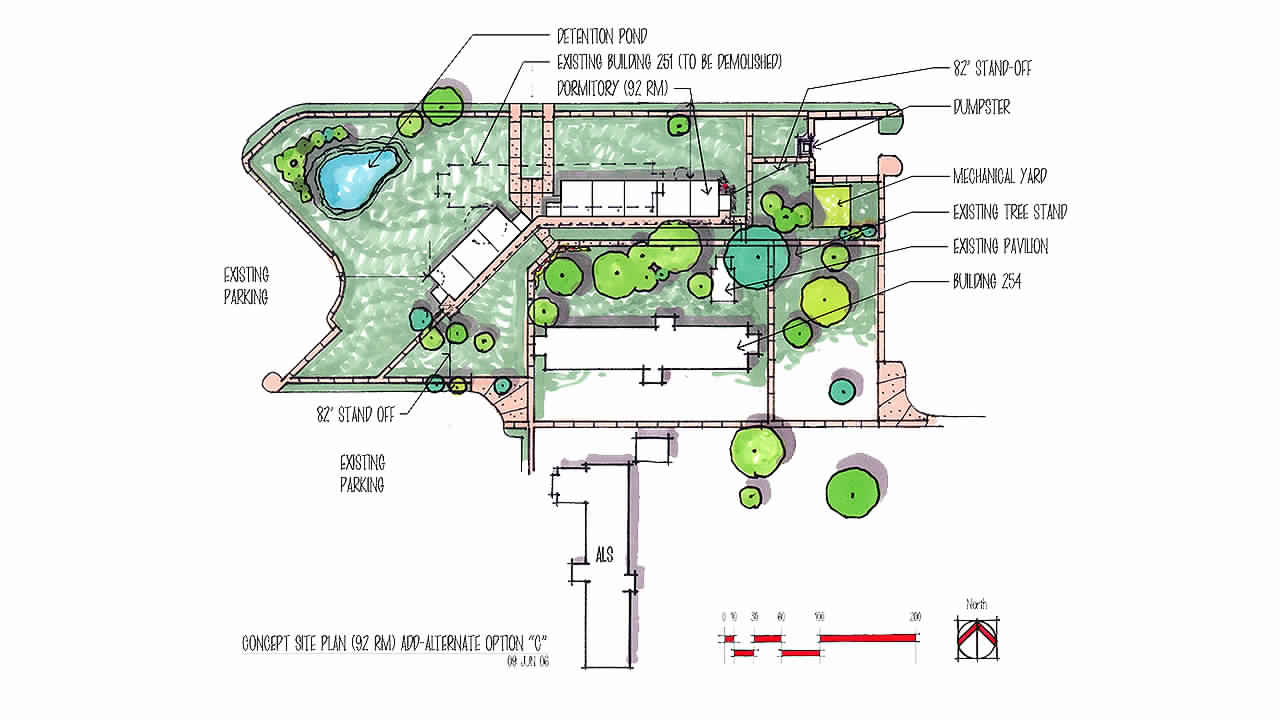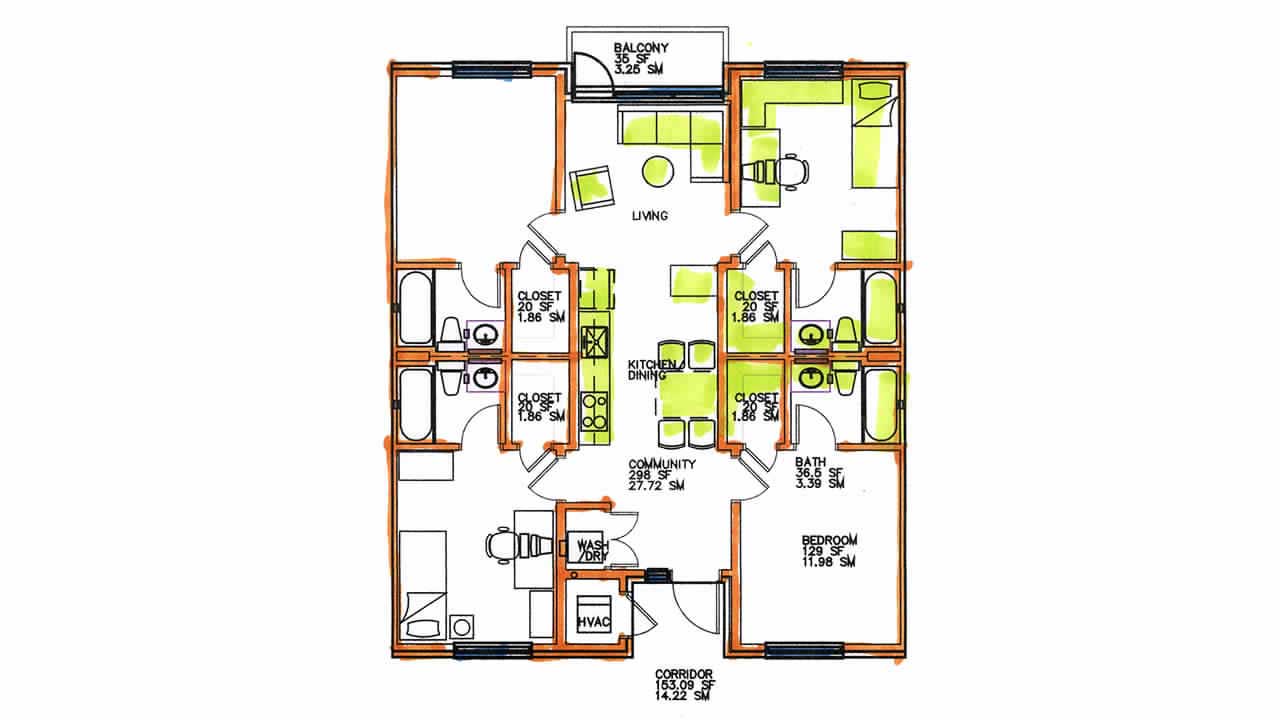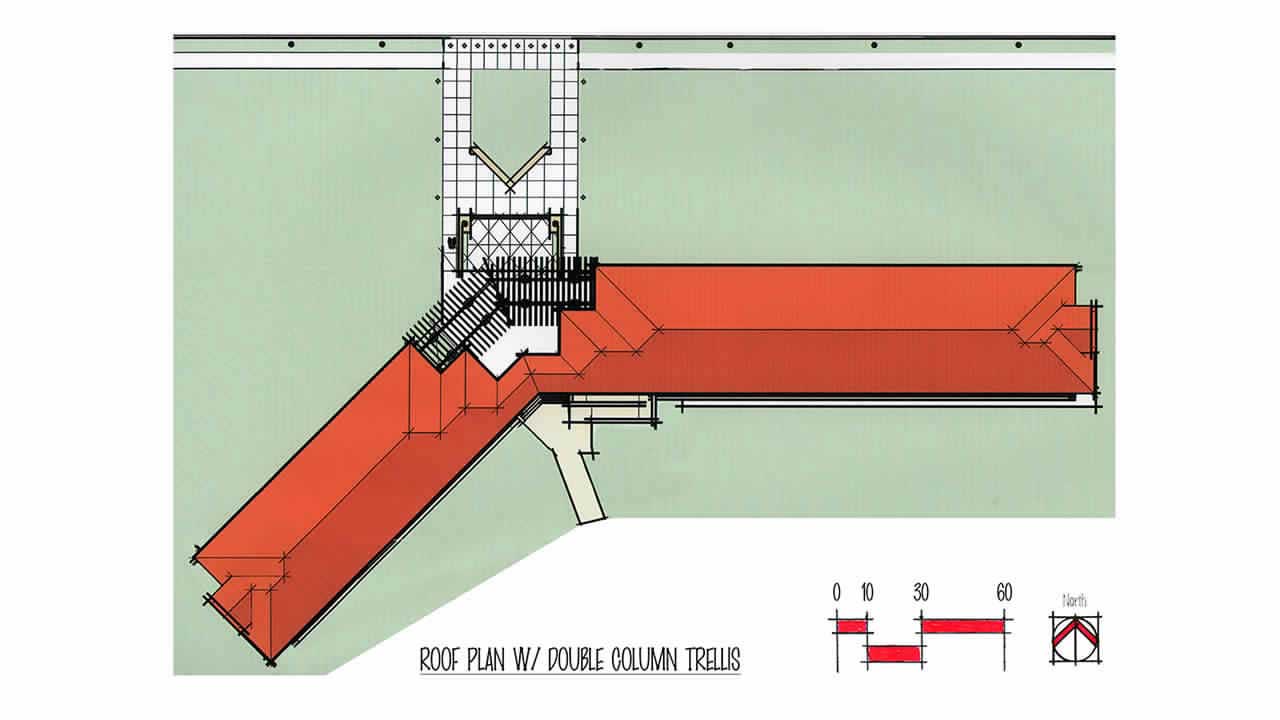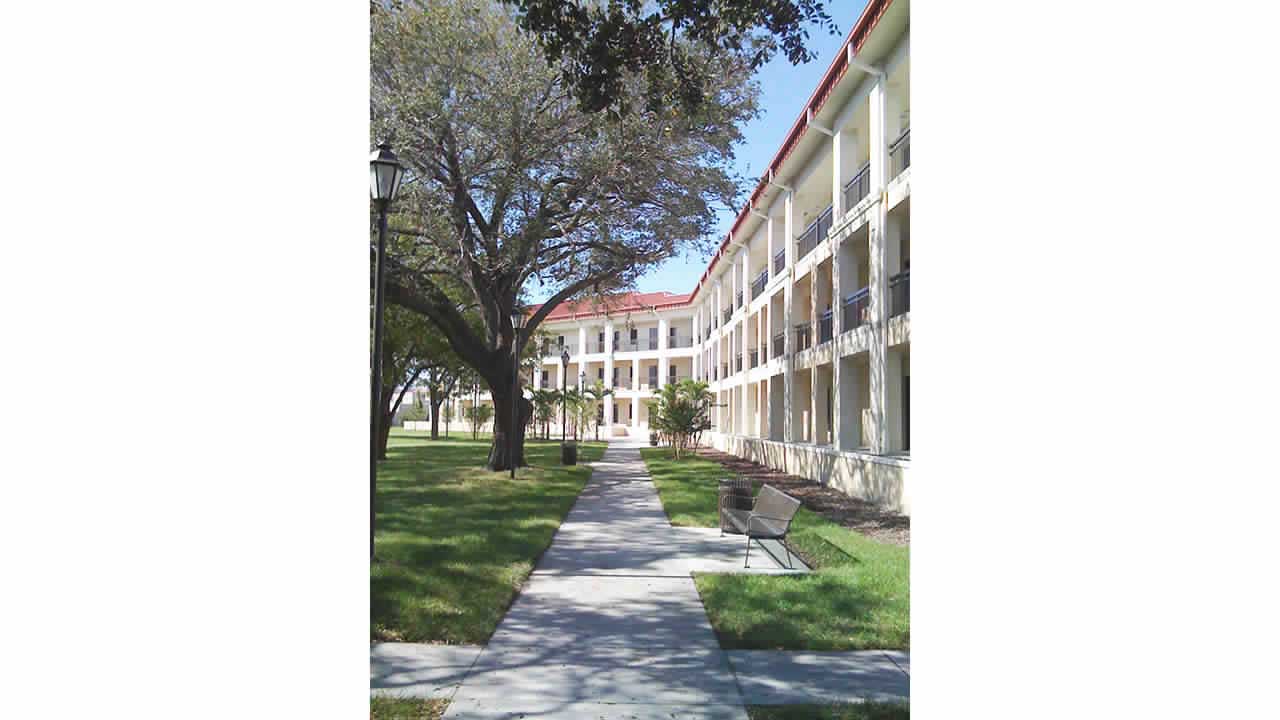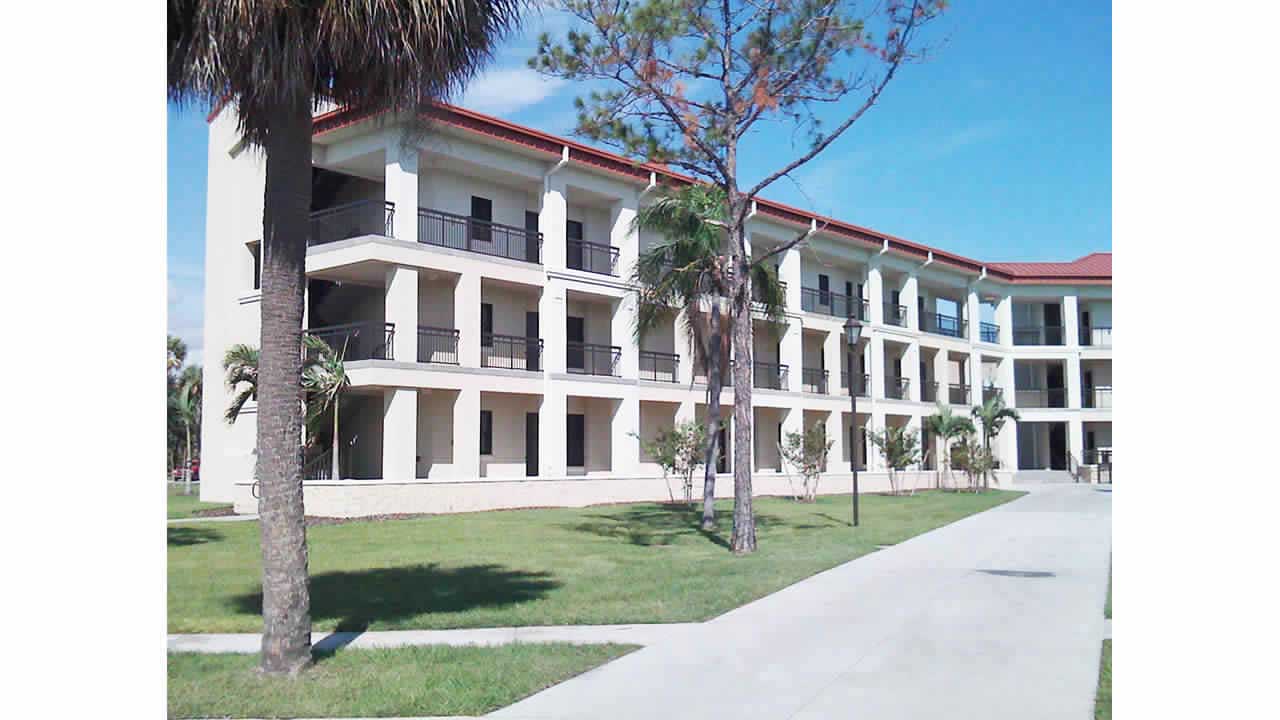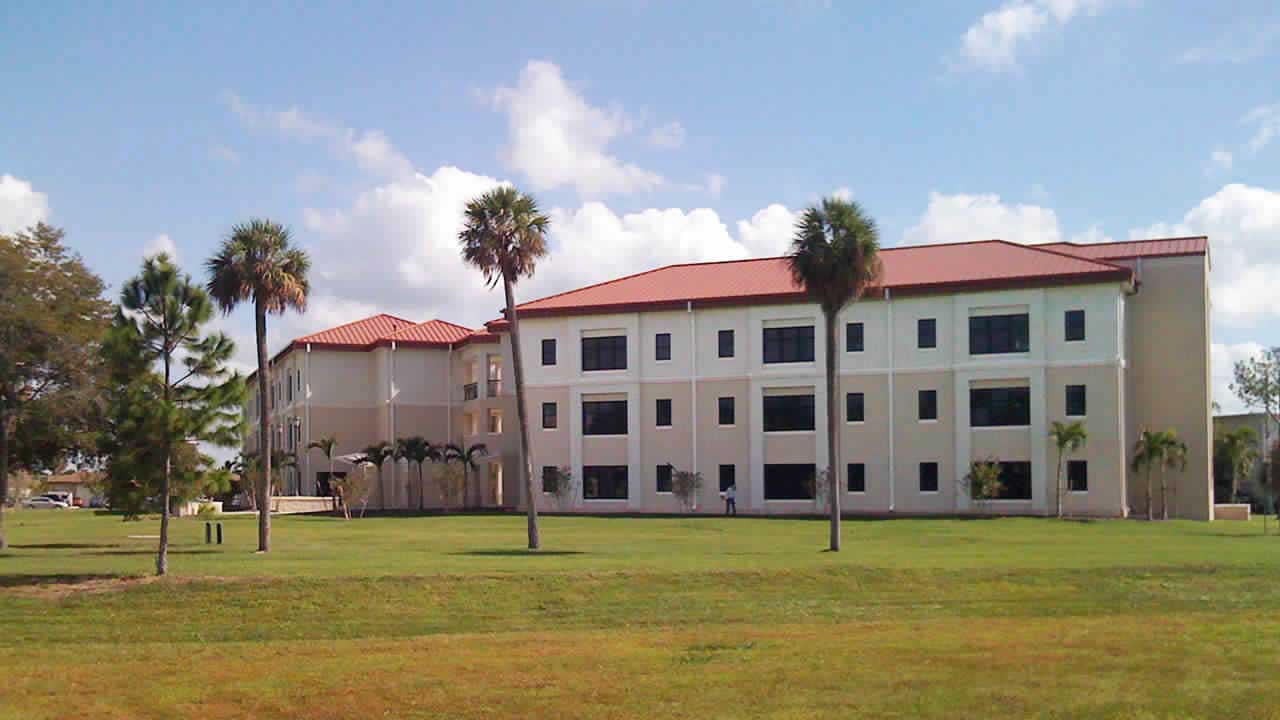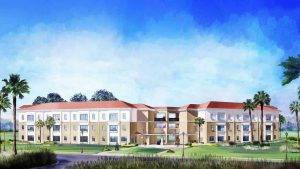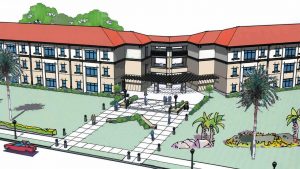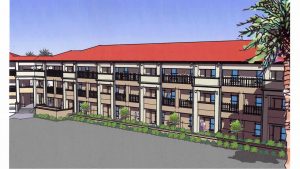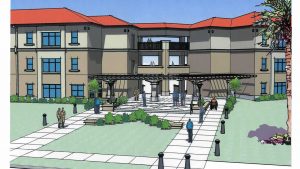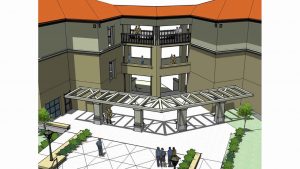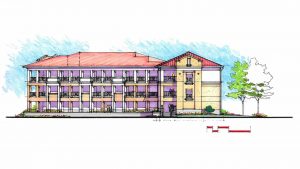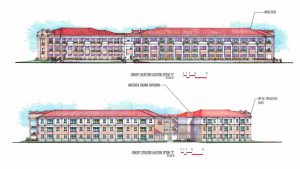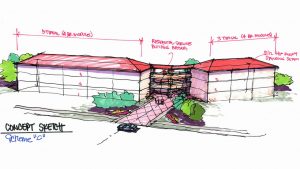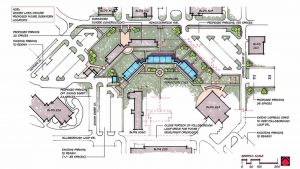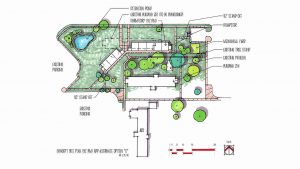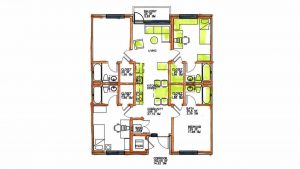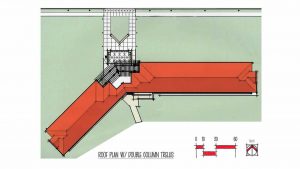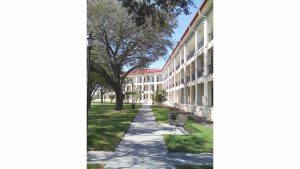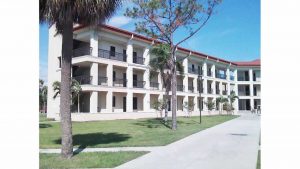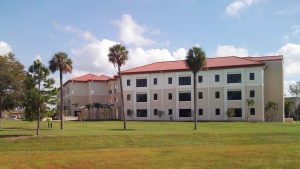Dorms 4 Airmen – MacDill
AMC/USAF Design Award
MacDill Air Force Base
Tampa, Florida
34,100 SF
$11 M
Design Completed FY06
Construction Completed FY08
Working hand-in-glove the Mobile District USACE engineering staff, the Blair Remy team programmed, planned, and designed (both interiors and exteriors) the three-story facility supporting the architectural theme of the Base. It is consistent with the Air Mobility Command’s Architectural Compatibility Plan (ACP) for MacDill AFB which emphasizes a vision of excellent architecture that displays a high quality corporate image and blends the values and character of place into the environment.
The Dormitory design centers on quads (four bedroom units) with individual private toilets and closet storage, and a common sitting, kitchen and dining area. Single loaded exterior walkways connote a loggia nestled wtihin the building facade and the arcade on each of the three levels overlooks the giant trees standing in the courtyard below. There are three staircases to provide convenient ingress and egress for the unaccompanied enlisted personnel.
The ground level houses a common support area containing a centrally located television room, game room, vending, administration office, mail service area, utility area (mechanical, electrical and sprinkler control room), public restroom, supply storage room, study/meeting room, and a bulk storage area. All aspects of the site conform to the requirements established in UFC 4-010-01, DoD Minimum Anti-Terrorism Standards for Buildings, inclusive of design to prevent progressive collapse.
Blair Remy uses architectural detailing to complement existing buildings; thus, creating a valuable contextual design response. Emphasizing horizontal proportions, combining historic features with an exposed skeletal frame, utilizing rectangular elements, developing a strong relationship between buildings and exterior spaces, and articulating the building facade to create shade and shadow are some of the design elements used to capture the essence of the ACP guidelines.

